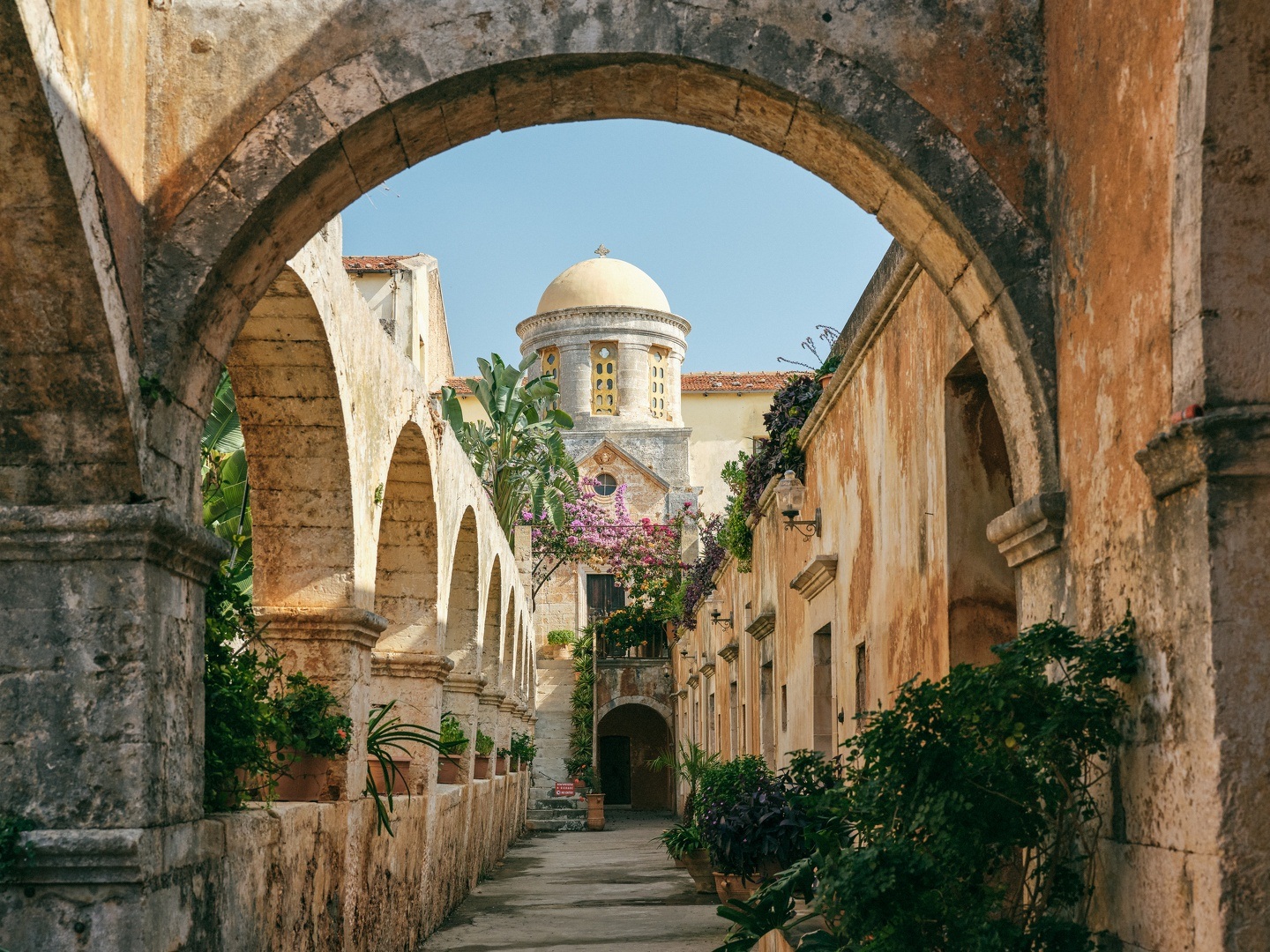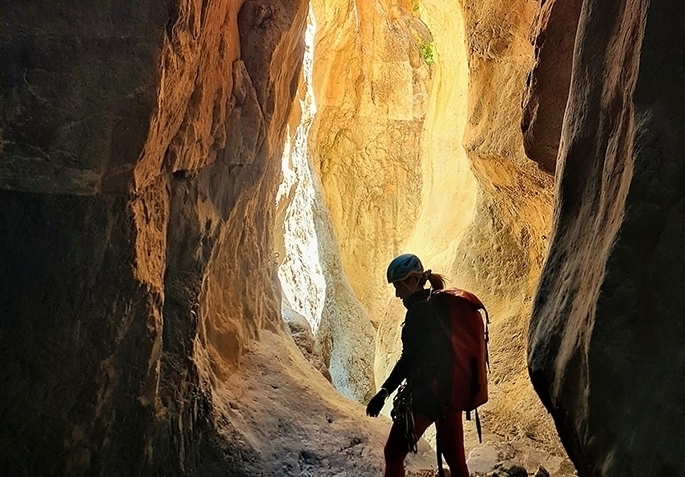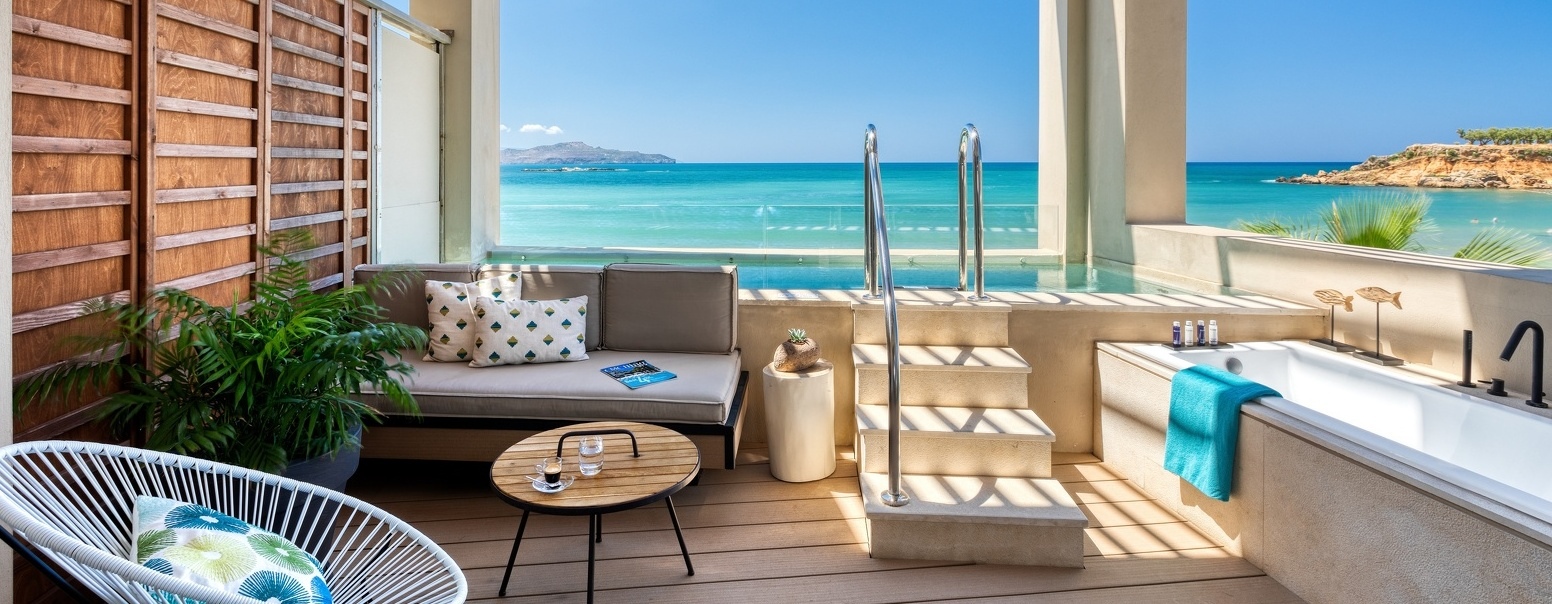Apokoronas: In the White Mountains embrace
Author Discover Crete
Nature
Nature
The rocky hillsides of Apokoronas, a part of the Hania region between the Cretan Sea and the White Mountains, are home to several lovely hamlets nestled among olive groves. It’s no wonder that this area is one of the top choices among northern Europeans looking to acquire a Mediterranean summer home.
I ponder this fact as I walk up a pretty, cobblestoned street in Vamos on my way to meet a man named Nikos who, along with a group of friends, launched an initiative back in the 1990s to bring life back to this village. The well-kept historical buildings and charming residences from the Venetian period that I see around me tell me their efforts have paid off.
As I continue my walk with Kyr-Niko, I learn that the village was an important administrative center in the early 20th century and was one of the first places on the island that had a high school, a bank, a magistrates’ court and a police station. Our conversation reveals interesting facts about the other villages in the area as well, making me even more eager to visit them.
I start at neighboring Kefala, once famed for its craftsmen. They worked mainly with stone and wood, and have left their mark on ornately decorated Venetian-style lintels that survive above the entrances to several homes and churches. An architectural surprise on a much grander scale lies in store at Gavalochori, where 30 wells, said to date back to the Byzantine era, can be found in a lush spot just outside the village. These wells were dug into the hard, rocky ground and their mouths are protected by massive dome-shaped covers that beckon you like gateways to some fantastical world.
It used to be the custom, in fact, to pour a jug of wine into each of these wells every November 3rd, in celebration of the saint’s day of George the Drunkard; the spirit of the holy man was believed to return the favor by helping boost the year’s output of wine. The roots of this custom stretch back in time to the worship of Dionysus; several clay jugs have been found around the wells and are now on display at the village museum.
The next stop on my tour is Paidochori and the farm of Manolis, an expert wild food forager. He welcomes me with a basket of figs, pears and mangos plucked from his trees, a cornucopia that hints at the abundant variety of fruits and vegetables that flourish on Crete. After toasting each other’s health with our first glass of tsikoudia, we start talking about foraging, and snail-hunting in particular.
There was a time when the entire village would turn out, armed with lanterns, on humid spring nights to track down this delectable treat. Rooting snails out becomes much harder in the summer, as they tend to hide from the heat in tree nooks and under large rocks.
On the other hand, there is one thing you can find in Crete without much effort at all: wild greens. Manolis was taught how to forage for them by his grandmother and can fill a basket every season of the year. He explains that there are more than 60 types of wild greens growing in the wider vicinity, from prickly radish and white hedge-nettle to dandelions and meadow parsley.
“You can’t rely just on how they look to tell them apart, you have to go by taste, texture and smell,” Manolis says. There are, of course, several wild greens that are toxic. This category includes mullein, which grows in the recesses of rocks and was once used to purify rainwater. Another plant that used to be collected by the locals was Carlina Gummifera, which they used as chewing gum. (The root juice of this purple thistle becomes gummy when it comes into contact with air.)
As we walk through the countryside, I spot another link to the past, a koumos, a tiny stone hut that served the owners of remote land parcels as an emergency shelter when they didn't have the time to cover the several kilometers back to their proper homes before nightfall.
My walk around Apokoronas continues among the olive trees, so predominant in this area, and eventually I come across the Samonas olive tree, which is several thousand years old. This tree, near an ancient settlement, is so enormous and so ancient that it has been listed as a monument of nature. Its trunk has split in two, creating a passage that allows you to walk through and feel the curves, nooks and crannies it has acquired through the ages. Like many of Crete’s other ancient olive trees, this plant is a living sculpture whose shape has changed over the course of the centuries.
There's more to learn about olives at the Agios Georgios Monastery Glebe in Karydi. As I walk beneath the dozen arches of the glebe's old olive press, I wonder what the area would have looked like in the 19th century, with all four millstones grinding away to produce what must have been a truly impressive amount of olive oil. Today, even with the roof caved in, the space still exudes an air of grandeur.
Neighboring Vafes is another of the area’s villages renowned for its olive oil production. “We once had nine mills,” Kyr-Manolis says proudly. One of those units is still in relatively good shape, so we get the keys from the coffee shop on the village’s main road and head there for a visit. I examine the massive millstones that were turned by donkeys and mules to crush the olives and peer at the press, which squeezed the pulp after it was placed in sacks. As the screw was turned tighter and tighter with a wooden shaft, the olive oil would seep out of the pores of the sacks stacked one on top of the other inside the press. I ask Kyr-Manolis about the small black marks on the wall, and we surmise that they must be the mark of a finger dipped in the olive pomace to record the annual yield. We continue walking around the quaint village streets to reach the main church, when Kyr-Manolis points to the foothills of the White Mountains on the horizon and to the start of the footpath that he took every day as a child to go to school in Vamos. It was a two-hour trek – and it was not the only one he did every single day of his youth.
As night starts to fall, I remember Kyr-Nikos’ invitation for a glass of wine at Douliana, where a group of 11 young villagers have opened a cooperative grocery store and café. They sell grape molasses, carob syrup and tahini made by the co-op, along with other artisanal products from different parts of Crete and the rest of Greece. They serve meze and drinks on the village square and often have live music in the evenings.
I find Kyr-Nikos chatting with one of these partners, Yiannis, and conveying his optimism for the endeavor’s prospects. Yiannis, for his part, worries about some of the more enduring challenges that such collective efforts invariably face. I start telling them about all the things I’ve seen and all the news I’ve learned while visiting the different villages of Apokoronas, and they look at me in troubled silence.
After serving some more wine, Kyr-Nikos breaks his enigmatic silence. “You can’t rush Crete,” he says, raising his glass. “Things go at their own pace here,” he adds with a meaningful nod. That’s certainly true for me. The wealth of attributes that Crete possesses is constantly threatening to drive me frantically from place to place. Its people, however, always help me find a more suitable rhythm to my explorations.
Source: “Handcrafted Crete”, Isabella Zambetaki, Region of Crete

Source: “Handcrafted Crete”, Isabella Zambetaki, Region of Crete
Good to know




















































